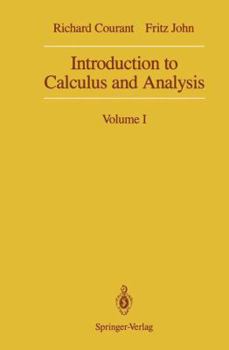Introduction to Calculus and Analysis, Volume 1
Select Format
Select Condition 
Book Overview
From the reviews: "Volume 1 covers a basic course in real analysis of one variable and Fourier series. It is well-illustrated, well-motivated and very well-provided with a multitude of unusually... This description may be from another edition of this product.
Format:Hardcover
Language:English
ISBN:0387971513
ISBN13:9780387971513
Release Date:January 1989
Publisher:Springer
Length:661 Pages
Weight:2.45 lbs.
Dimensions:1.6" x 6.5" x 9.5"












